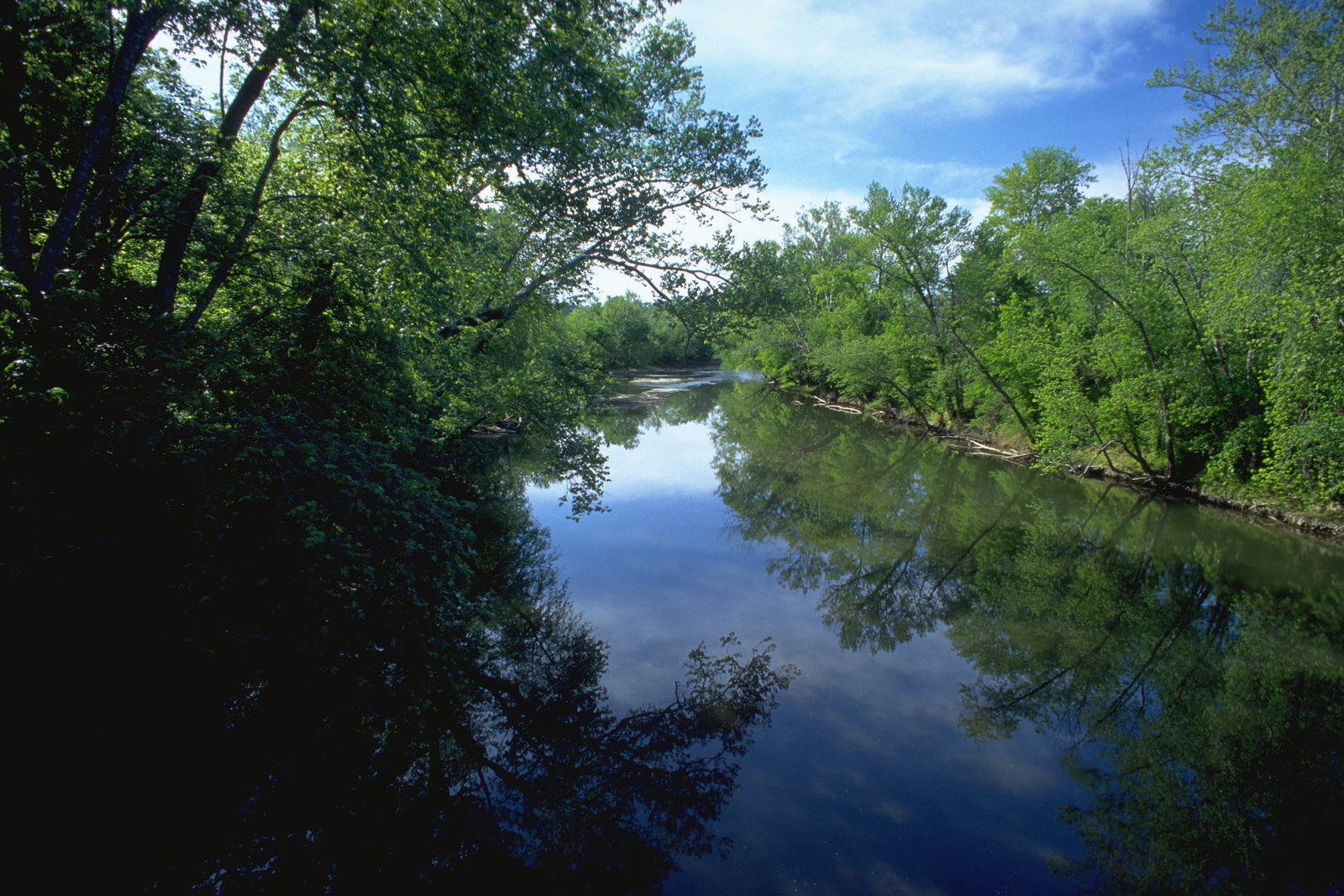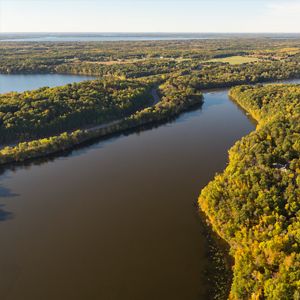Restoring Western Kentucky Wetlands and Floodplains
Learn how we're turning back the clock for nature.
Restoring western Kentucky’s wetlands is a journey back in time. Many years ago, these wetlands formed an intact floodplain along the Mississippi River. During floods, the high water flowed into the surrounding wetlands, where it was stored before slowly draining back to the river. As the flood waters meandered back to the Mississippi, these wetlands captured sediments and other pollutants, providing cleaner water and a healthier Mississippi River.
.jpg)
Human Impacts on Wetlands
When this part of Kentucky was settled and cleared for farmland and development, many of these wetlands and their associated benefits were lost. Trees were cut down. Ditches and levees were installed. Streams were straightened, deepened and widened. This resulted in water running off the land quickly, taking pollution and sediment along with it. Overall, Kentucky has lost more than 80% of its historic wetlands. A recent Supreme Court decision weakens wetland protections, which could result in even more loss.
The cumulative result throughout the Mississippi River Basin has been degraded water quality in both local streams and large rivers and, ultimately, the formation of a large dead zone in the Gulf of Mexico.
Turning Back the Clock
Wetland restoration involves the use of voluntary programs to take frequently flooded cropland out of production, re-plant trees and change the way the water moves across the land to restore natural wetland systems.
Native tree species like cypress, overcup oak and swamp white oak are selected based on the soil type and flooding frequency of the wetland and are usually mast-producing trees planted at 435 seedlings per acre. It takes a decade or more to establish a young forest after these plantings. Restoring the hydrology of the area may include plugging ditches that were previously installed to drain the land. Occasionally a water control structure is installed. In either case, the result is that water stays on the land longer. When the land is capable of absorbing and holding water longer, it is able to remove nutrient pollution, which leads to improved water quality in local streams, the Mississippi River and the Gulf of Mexico.

From the Mississippi River to the Gulf of Mexico and Beyond
TNC works in all 50 states and in more than 70 countries. When TNC in Kentucky restores wetlands in the western part of the state, we are not working alone. In the United States, 18 states and programs are working together on the Mississippi River Basin Project, an initiative to reduce nutrient pollution going into the river, helping to dramatically reduce the size of the dead zone in the Gulf of Mexico.
TNC is increasingly working across borders to expand our impact. This is particularly true for TNC in Kentucky and TNC in Tennessee, which now share several staff members to maximize our impact on wetland restoration work, agriculture, prescribed fire and more.
When we work together, we can have much bigger impacts than when we work alone. Since 2011, we have worked with the U.S. Department of Agriculture Natural Resources Conservation Service (NRCS) to promote and implement a federal wetland conservation and restoration program that has enrolled more than 19,000 acres in an eight-county area in western Kentucky. Our six-year wetland restoration monitoring project will provide valuable information that conservationists around the world can use to make their own projects more successful.
Quote: Shelly Morris
We’ve learned that when these lands are restored, they do great things. They sequester nutrients and clean our water better than places that are not restored. The amount of native wildlife that are using these areas is phenomenal.
Western Kentucky's wetlands and rivers
We Can’t Save Nature Without You
Sign up to receive monthly conservation news and updates from Kentucky. Get a preview of Kentucky's Nature News email.


.jpg)
.jpg)
